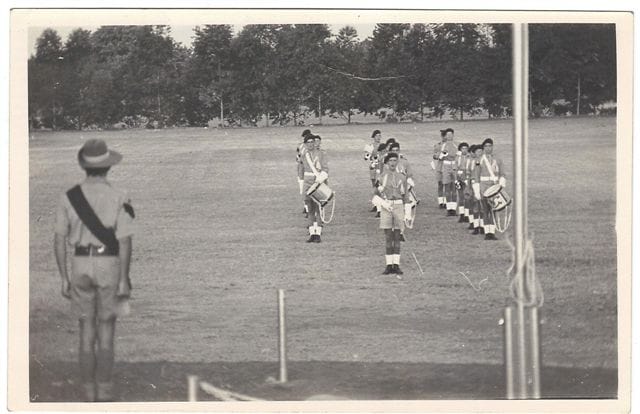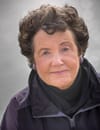School Cadets

Que Que High School Cadets. Foreground facing band Sergeant Major Colin Pittaway. Band Leader Green. First row L to R: Cecil Monks, Barry Kruger and Barry Erasmus.
School Cadets
School cadets was compulsory for older boys. They paraded on Wednesday afternoons on the field between the Gwelo and Gokwe roads.
School Cadets
The Drill Cadets wore grey belts, grey putties and Australian hats, with one side pinned up. Besides marching they learned orienteering and shooting at the rifle range that adjoined the woodwork classroom, away from the main school buildings. Boys gathered there during morning school break at ten to have a quick smoke. Sometimes Gabby Turnbull the English teacher would join them there. But on Wednesday afternoons they learned to take a 303 SMLE rifle apart, clean it, put it back together again and shoot. At the end of the year there was a shooting competition.
You could join the band if you could play an instrument. Steve Nisbet, a bugler, taught Barry Kruger to play at home two years before he went to high school in 1960. He quickly moved from Drill to the Fancy Brigade.
Colin Pittaway was the Sergeant Major at the time. He issued the orders for the afternoon’s parade. The band leader, Green, had the honor of carrying the mace. Green, a ducktail (juvenile delinquent) from Benoni, South Africa, was also known as Jol Off, (‘Get Lost’), which he said often.
It was a big job to get ready the night before each practice: the Fancy Brigade wore berets instead of hats, a white lanyard passed over the shoulder, white gauntlets, white gloves, white belts and white putties. You had to be able to see your reflection in your boots. Then came the cleaning of the brass and silver. Barry quickly progressed from bugler to drummer, which was more prestigious. There was plenty of silver on the snare drum.
The bandmaster was the Latin teacher, Mr. Sibson, who played the trumpet. He flawlessly played Verdi’s Triumphal March from Aida while the band was inspected.
The Band’s finest moment came on Remembrance Day, Sunday, November 11, 1962, when, after long and tiring practice, they marched through town to the WWI cenotaph below the Globe and Phoenix bioscope (cinema).
In Flanders fields the poppies blow
Between the crosses, row on row,
That mark our place; and in the sky
The larks, still bravely singing, fly
Scarce heard amid the guns below.
We are the Dead. Short days ago
We lived, felt dawn, saw sunset glow,
Loved and were loved, and now we lie,
In Flanders fields.
Take up our quarrel with the foe:
To you from failing hands we throw
The torch; be yours to hold it high.
If ye break faith with us who die
We shall not sleep, though poppies grow
In Flanders fields. by Lieutenant Colonel John McCrae
Everyone assembled wore a red crepe paper poppy on his or her lapel or dress.
Many Rhodesians made the supreme sacrifice. Many returned needing help. A minute of silence at eleven a.m. was observed for the twenty million people who died in WWI. A second minute of silence was dedicated to the living affected deeply by it. Then the band struck up.
After the parade, Mr. Sibson and Mr. Benson, both WWII veterans, complimented the band for “a very disciplined and professional performance carried out in almost perfect precision.”
Three years later, to the minute, Prime Minister Ian Smith unilaterally severed our links with Britain. The bush war followed.
Many thanks to Barry Kruger of Cape Town for cadet memories and photo.
